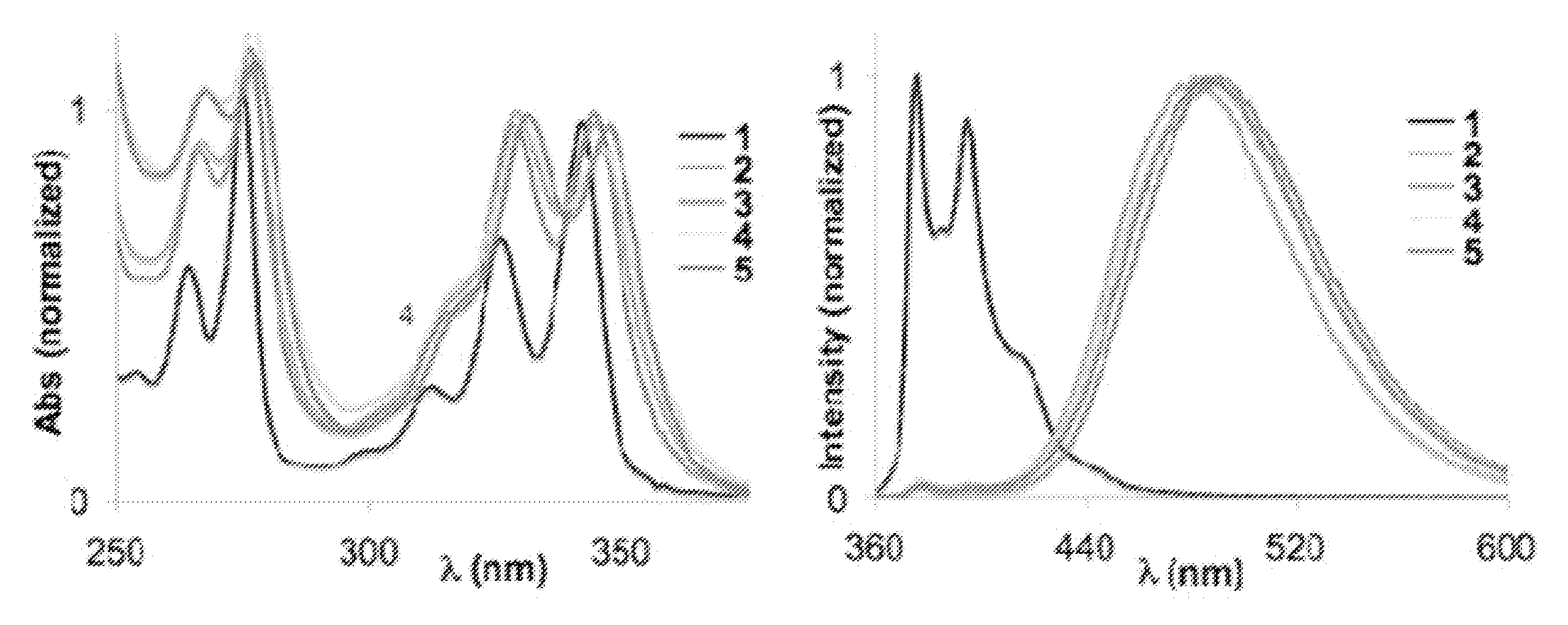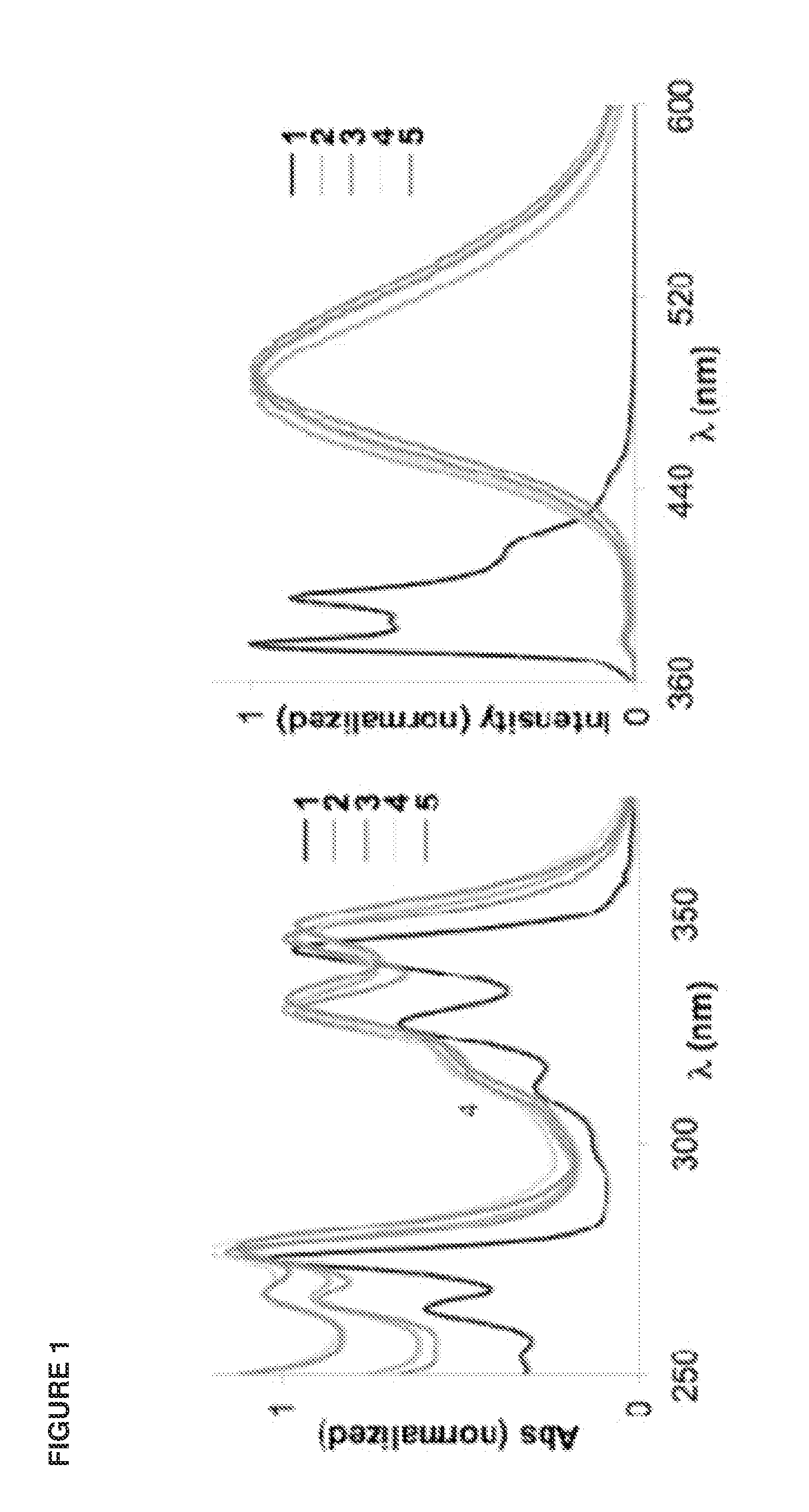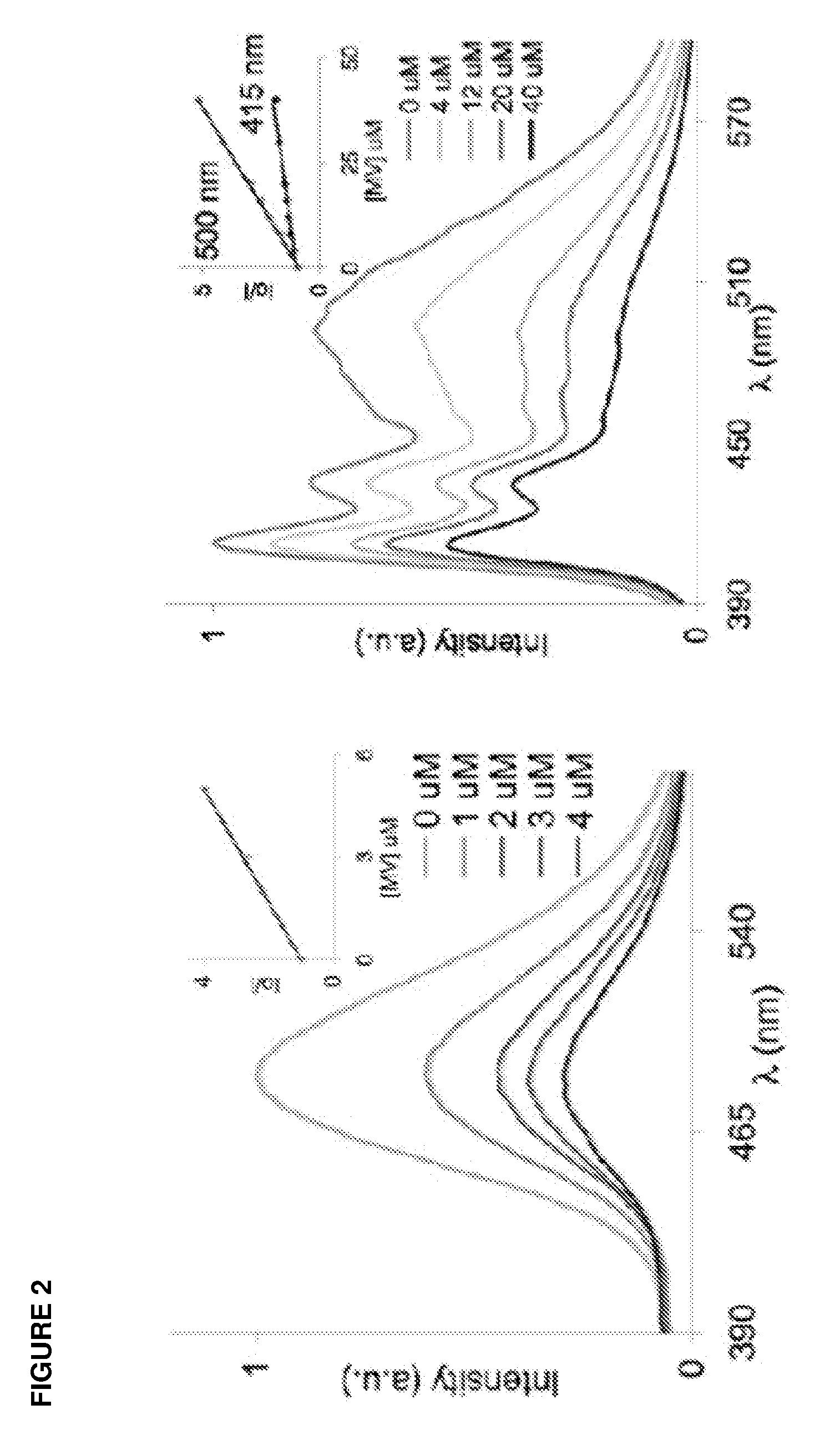Strongly quenching oligomeric excimer/quencher pairs for detection schemes
- Summary
- Abstract
- Description
- Claims
- Application Information
AI Technical Summary
Benefits of technology
Problems solved by technology
Method used
Image
Examples
example 1
Efficient Quenching of Oligomeric Fluorophores on a DNA Backbone
[0068]Here we describe the finding of highly efficient quenching in a different class of oligomeric reporters in which the fluorophores are assembled on a DNA backbone. The molecules are well-defined, relatively small, water-soluble oligomers and are trivial to conjugate to DNA. We find that they can display quenching efficiencies that are unprecedented for discrete organic molecules and rival values previously seen only for conjugated polymeric systems.
[0069]We have recently studied these DNA-like fluorophores (oligodeoxyfluorosides (ODFs)) as a new class of reporters and sensors (Chart 1). They display highly diverse and tunable properties depending on length, composition, and sequence. To begin to explore the quenching properties of such fluorophores, we constructed a simple oligomer series containing pyrene nucleoside monomers (see structures) to explore the effect of chain length on the optical properties. It is kn...
example 2
Highly Sensitive Oligomer Dye / Quencher Pairs and Their Use in Sensing
[0077]The two molecules below were synthesized and purified. One (the top compound) consists of a tetrapyrene excimer fluorophore with a nonfluorescent (tetrahydrofuran) commercial spacer at its 3′ end. The second (the bottom compound) contained the same tetrapyrene fluorophore, but with a commercial dabcyl quencher at the 3′ end. The fluorescence quantum yield was measured for both in water. The data showed that the molecule with a quencher linked to the oligomeric excimer fluorophore had a quantum yield 1000-fold lower than that of the fluorophore lacking a quencher. The data show that covalent linking of a quencher to an excimer fluorophore yields highly efficient quenching, thus giving a very low background signal. The cleavage of such a linker results in a large increase in fluorescence.
example 3
Sensors of Esterases and Lipases
[0078]An oligodeoxyfluoroside (ODF) oligomer is conjugated to a viologen quencher by a linkage that contains an ester group. The oligomer has the generic structure of Formula I:
[0079]A may be present or absent. Where A is present it may be a scaffold group, or a bond or linker to a substrate, which substrate may include a bead, polynucleotide, polypeptide, solid surface, etc.;
[0080]X is a scaffold moiety;
[0081]R is an excimer or exciplex forming dye, where each R can be the same or different;
[0082]n is 0 to 18,
[0083]Y is a cleavable linker, and
[0084]Z is a quencher for R. Thus, X1-(X2)n-X3 is a polychromophoric excimer-emitting or exciplex-emitting fluorophore.
One Example:
[0085]
Methods.
[0086]A viologen-ester-maleimide conjugate is synthesized, and a tetrapyrene ODF, using a DNA synthesizer. The ODF-thiol conjugate is mixed with the quencher-maleimide conjugate in aqueous buffer and incubated. The product is then separated from unwanted starting materi...
PUM
| Property | Measurement | Unit |
|---|---|---|
| Angle | aaaaa | aaaaa |
| Nanoscale particle size | aaaaa | aaaaa |
| Nanoscale particle size | aaaaa | aaaaa |
Abstract
Description
Claims
Application Information
 Login to View More
Login to View More - R&D
- Intellectual Property
- Life Sciences
- Materials
- Tech Scout
- Unparalleled Data Quality
- Higher Quality Content
- 60% Fewer Hallucinations
Browse by: Latest US Patents, China's latest patents, Technical Efficacy Thesaurus, Application Domain, Technology Topic, Popular Technical Reports.
© 2025 PatSnap. All rights reserved.Legal|Privacy policy|Modern Slavery Act Transparency Statement|Sitemap|About US| Contact US: help@patsnap.com



